I've had the good fortune to listen to audio components of late that have become my new performance benchmarks in ways I couldn't have imagined even a few short years ago.
For music lovers, the good news is that these components have an extraordinary ability to play the wide swath of recordings that spans our recorded music heritage, from our earliest acoustic recordings to the latest "super" recordings, and turn them into extraordinary high-fidelity musical experiences.
These components serve the music so well that music lovers who want to explore all of our recorded music canon in high-fidelity will be dancing in their listening rooms in glee at how satisfying musical performances can be with these components.
For audiophiles, the good news is that these components also have superb sound quality in the typical audiophile sense of that word. Yet, these components don't severely limit the kind of recordings you can enjoyably listen to, like most components with an "audiophile voicing" do.
In fact, these components have performance qualities that put them in such a rarefied category that it exceeds the limits of the enthusiast audio vocabulary that audio writers use to articulate their performance in terms of sound quality and musicality.
In the realm of solid-state amplification, the pairing of the Wayne Colburn designed Pass Labs XP-12 line-preamplifier (review HERE), and the Nelson Pass designed First Watt SIT-3 stereo amplifier (review HERE), are an example of this performance paradigm that serves both music lovers and audiophiles equally well, something that can be quite difficult to accomplish.
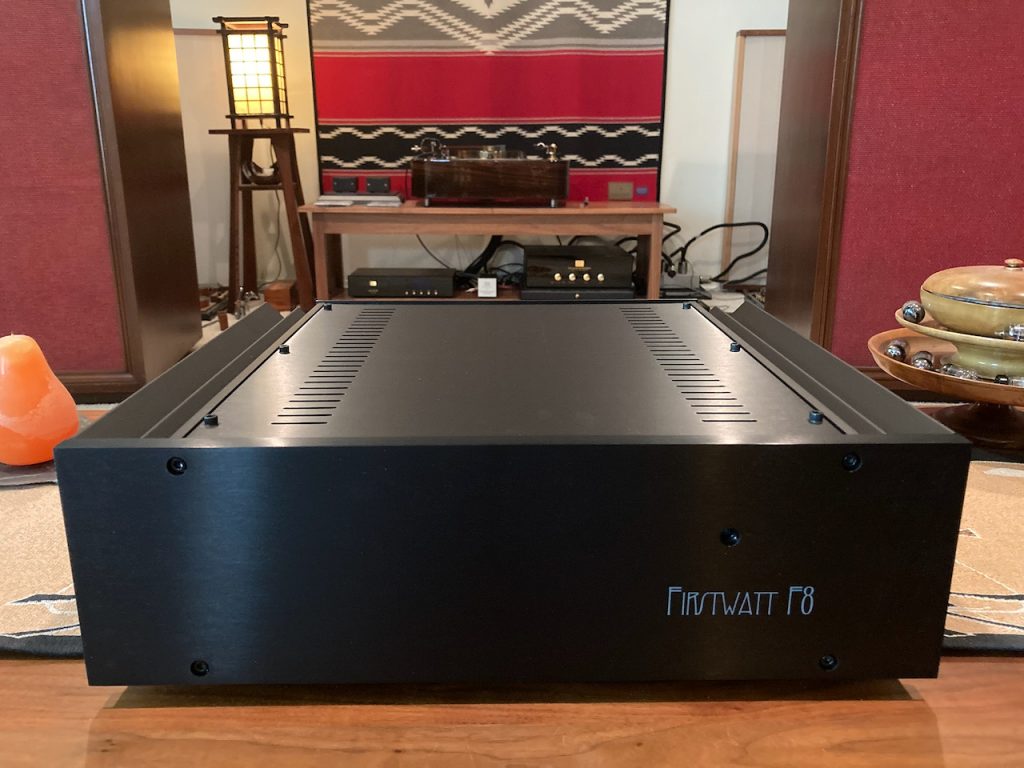
The new First Watt F8 stereo amplifier. $4000 USD.
After having lived with Nelson Pass' First Watt SIT-3 as my reference solid-state stereo amplifier for quite a while now, I continue to be very impressed with its performance, both in terms of its musicality and sound quality, and now the new First Watt F8 stereo amplifier has arrived from Nelson Pass.
Nelson's website description of the First Watt F8 stereo amplifier:
"Originally created almost 6 years ago, the F8 is a stereo two-stage single-ended Class A amplifier using the NOS Toshiba 2SJ74 P channel Jfets and SemiSouth R100 SiC power Jfets for signal gain, plus IRFP240 Mosfet mu-follower current sources, for a total of three devices per channel.
"It is similar to the J2 amplifier, but has only one front end transistor instead of six, operated as a current feedback amplifier (CFA) as opposed to the J2's voltage feedback (VFA) differential input. This front end is more consistent with the single-ended approach to amplifier design and yields a purer second harmonic character, less distortion with lower negative feedback, greater bandwidth and higher damping factor."
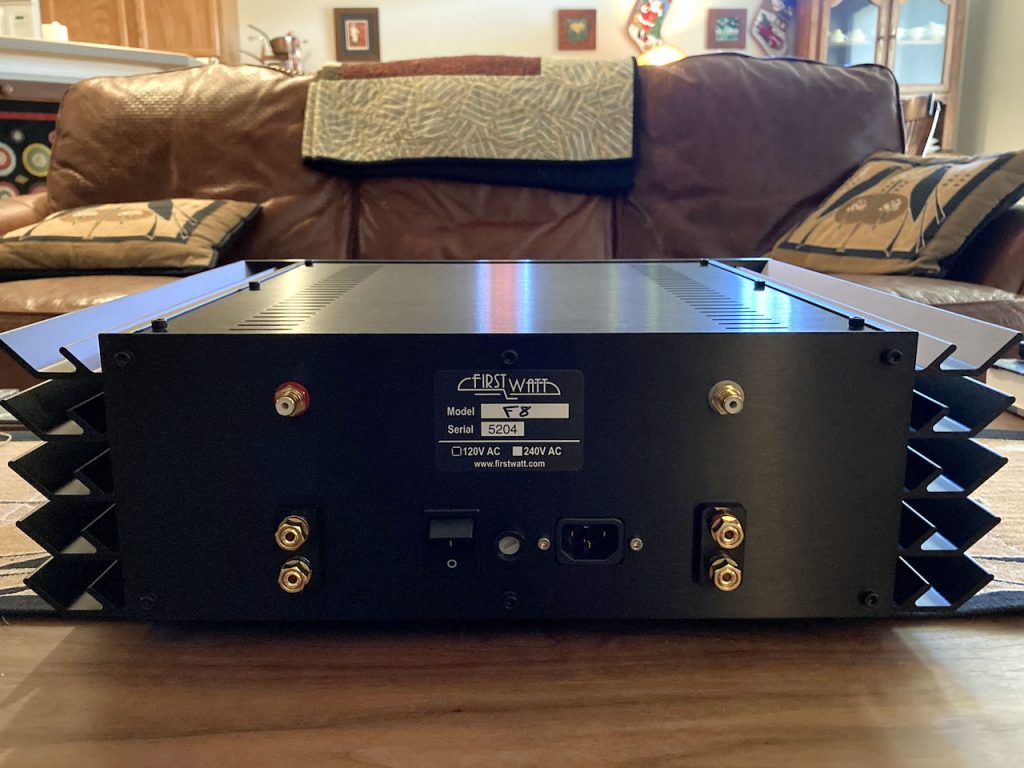
The new First Watt F8 stereo amplifier.
Here's a little more information from the First Watt F8 owner's manual (link HERE):
"The J2 is perhaps the most popular amplifier made by First Watt. Brought to market eleven years ago, it was not intended for more than our usual 100 unit total production. However it was so well received that I broke my rule and it is still made. Still, there will be an end, as the special transistors needed have long since been unavailable and our supply is starting to run low.
"I wanted to create yet another amplifier with the SemiSouth SiC R100 power Jfets, so in 2015 I developed a design with the same output stage but an alternative front end circuit. The prototype was clearly an improvement, but the J2 remained so popular that we decided to wait. As the years went by, I put some more work into it, and now we are finally releasing it as the F8.
"The simplified schematic:
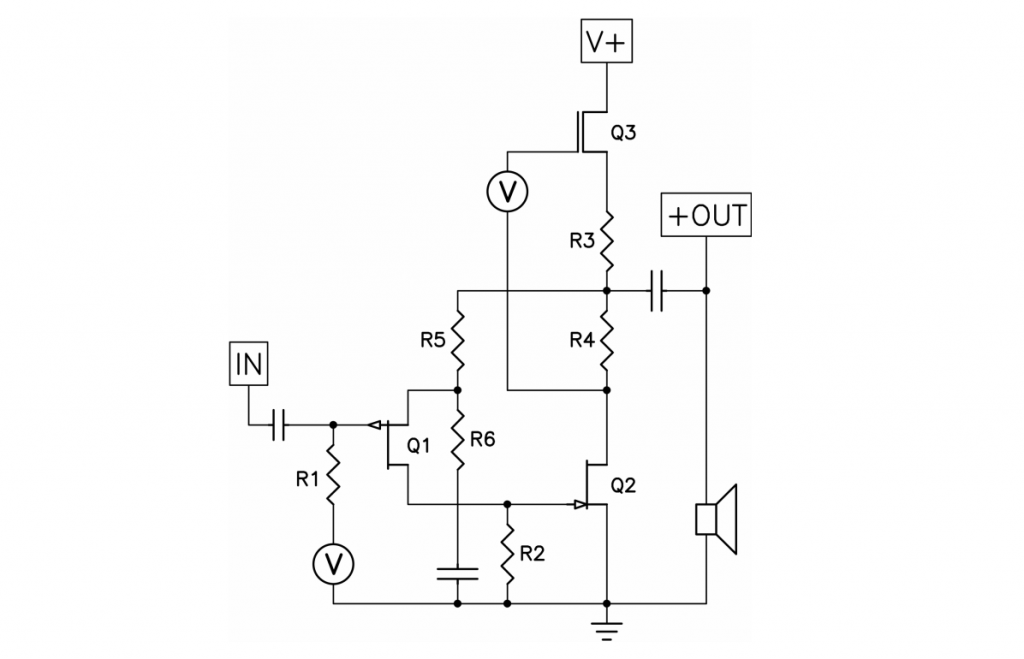
"There are two Common-Source gain stages, consisting of Q1 and Q2, both set to their operating points by current source Q3. Q1 is the Toshiba 2SJ74 Jfet, and Q2 is the SemiSouth Silicon Carbide R100 power Jfet, both parts NOS from the First Watt vault. Q3 is the venerable International Rectifier workhorse, IRFP240. The circuit invites comparison with the J2. Both have two stages using these parts, and the output stage is virtually identical, but the J2 uses 6 Jfets in the input circuit - a complementary parallel push-pull differential stage biased by constant current sources. By contrast the F8 uses just a single Toshiba 2SJ74 P channel Jfet which biased by the amplifier's output.
"Five fewer transistors is part of the difference - the J2 input topology is what we refer to as a VFA, or “voltage feedback amplifier”. The F8 would be referred to as a CFA, or “current feedback amplifier”. Both approaches to feedback have their advantages, and there are adherents for both. In this case, the CFA topology gives several advantages - simpler circuit, simpler/smoother transfer characteristic and a little better performance by measurement. Something else is missing as well - no degenerating resistors on the output power Jfet.
"The Q3 'Mu follower” biases not only the output power Jfet Q2, but also the input Jfet Q1, and this bias feed is also the feedback signal of the CFA circuit. Both devices operate with the same phase with respect to their characteristics. This congruence helps give rise to the nice “negative phase” second-harmonic character that you can see here:
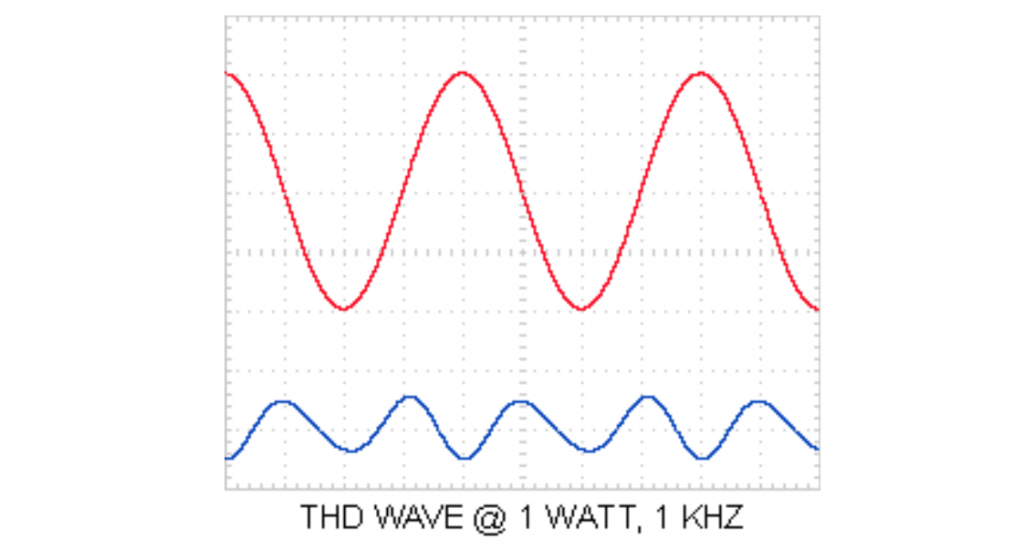
"This is not the transistor amplifier you may remember from the '70's. The fundamental of the amplifier output (red) at 1 watt along with a magnified image of the distortion (blue). You can see that it is a nearly pure second harmonic and that its phase alignment is “negative” at both peaks of the fundamental waveform. No spikes or weird looking stuff. And if you don't like that - well, it's only at 0.012%...
"10 years ago when I began working with SIT circuits, I discovered that there was a consistent preference for this sort of characteristic in amplifiers over a range of distortion levels from about .01% to 1%. Somewhere below that, it was not usually heard - and above that it could be excessive. Not only was second harmonic preferred over other harmonic content, but its phase seems to matter.
"I used blind evaluations for the SIT-1, the First Watt amplifier, and on the front panel there was a knob that allowed adjustment of this characteristic in distortion amplitude and phase. I found that listeners tended to cluster on the same setting, which was made the center of the adjustment meter. The F8 has this same characteristic, but down at the lower edge of audibility.
"You are probably aware that with First Watt, numbers aren't everything, but by virtue of the simpler and smoother gain path coupled with some better numbers, the F8 offers some improvement upon the character of the J2.
"What's missing? The F8 does not have a balanced input. It also has output coupling using two big electrolytic and one polypropylene capacitor with a roll-off frequency of 1 Hz.
"Distortion curve vs output power at 8 ohms, 1 KHz:
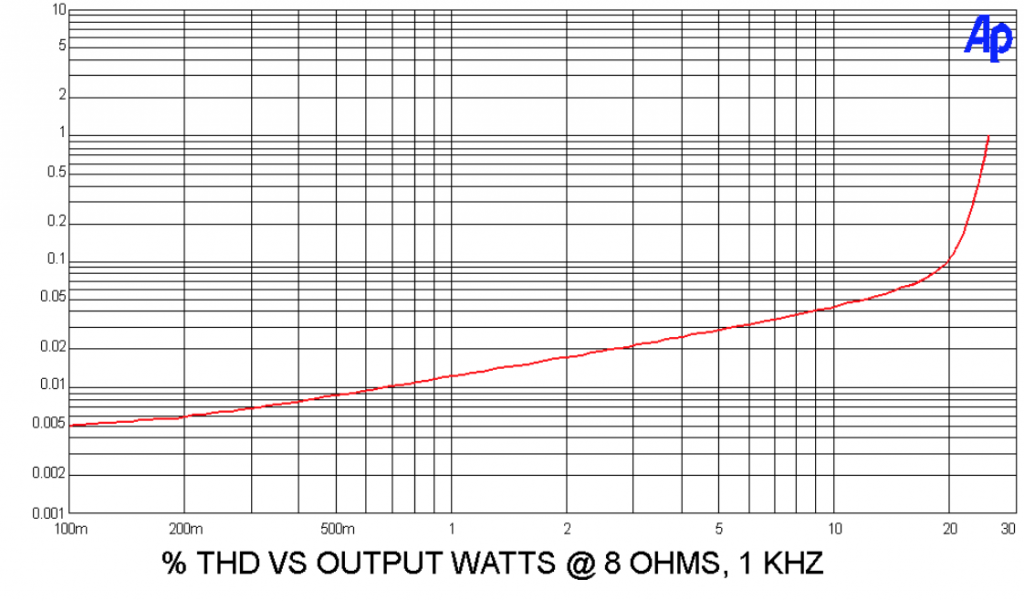
"Distortion curve vs output power at 4 ohms, 1 KHz:
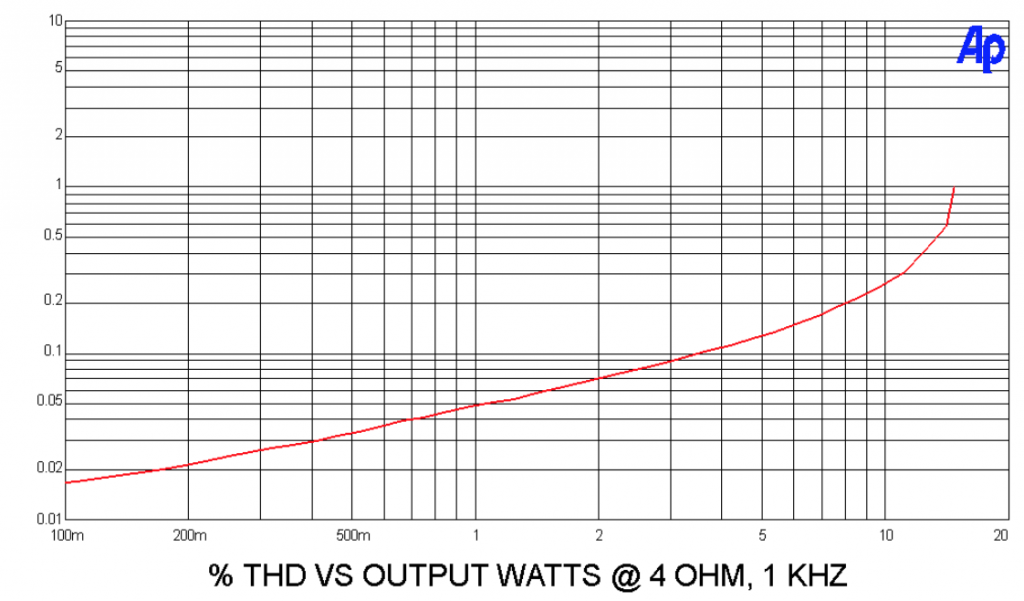
"Distortion vs Frequency:
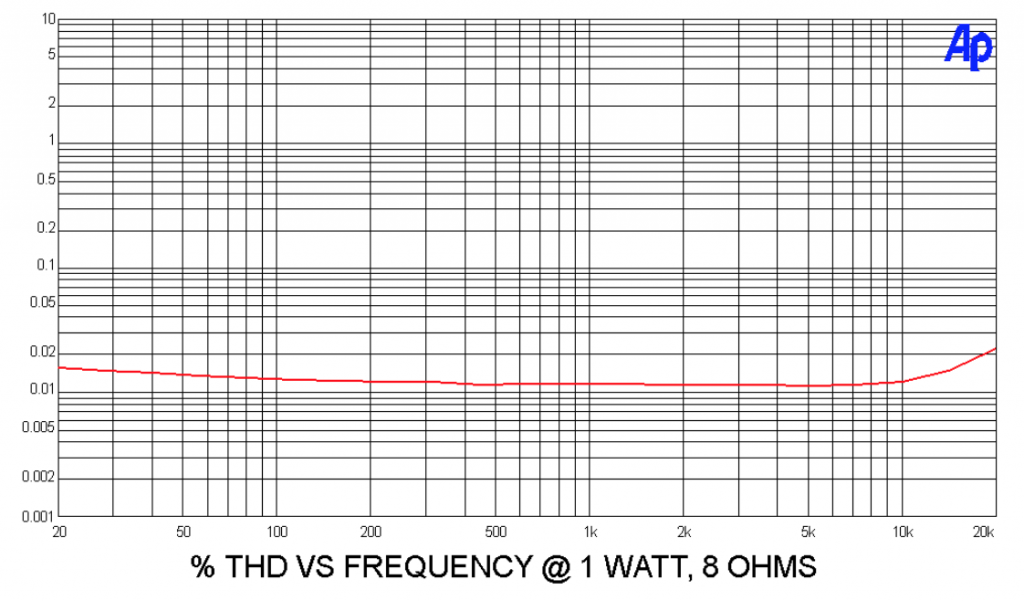
"Gain/Frequency Response:

"As you compare the J2 and the F8, you will find quite a bit of similarity, but the F8 is a modest improvement in several areas. In particular, the damping factor and high frequency response are twice as good, and distortion numbers are lower. I am pleased to note that this is achieved with 10 dB less open loop gain on the circuit and 5 dB less feedback.
"Still, this is not the primary thing - it's just what I can show you in print. The real merit to the amplifier is in the experience of listening. This is a matter of how compatible it is with the rest of the audio system and the taste of the listener.
"This might not be the amplifier for you, but I think it deserves a listen.
"You will have noticed, I enjoy amplifiers with a little personality. They don't have to measure perfectly, they just have to sound good. This is a simple little Class A amplifier with a very nice personality, and I hope you like it.
"Nelson Pass"
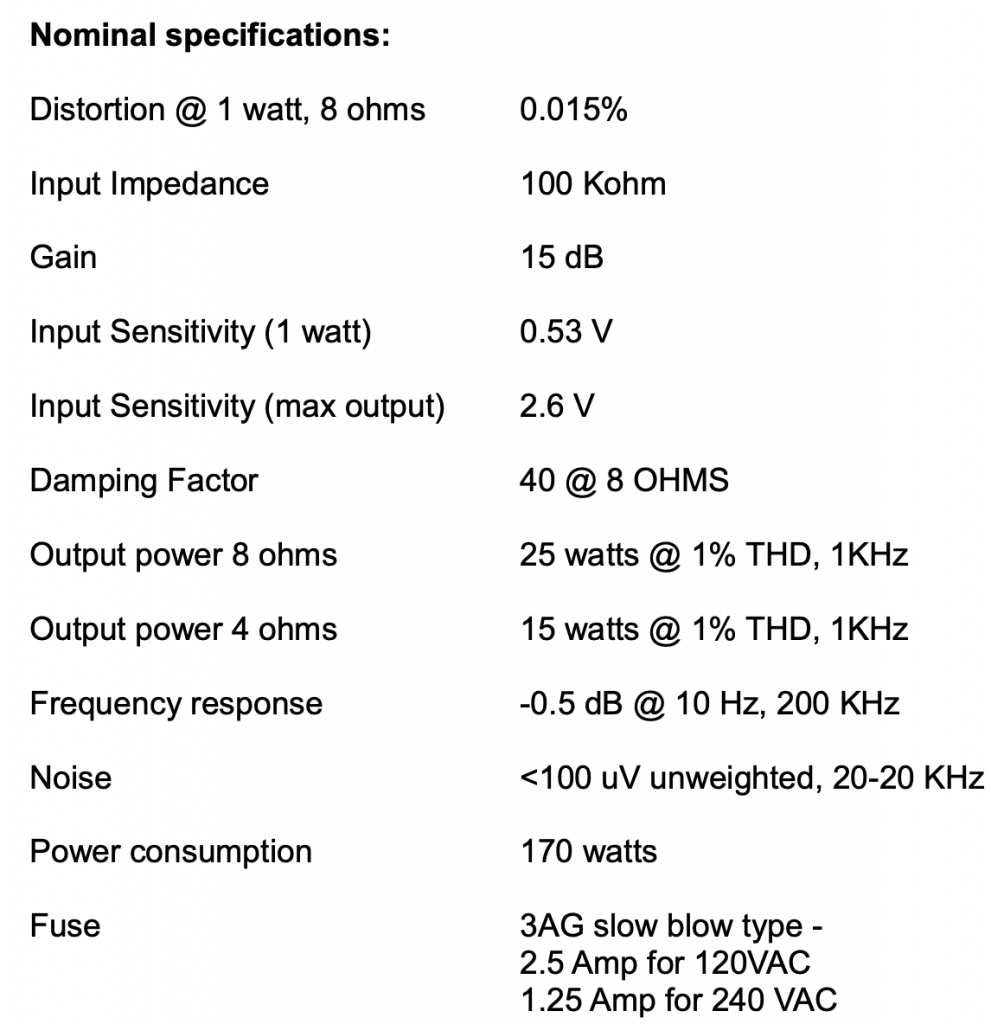
For those with 16 Ohm loudspeakers - like my vintage Altecs - I asked Nelson what the power output is into a 16 Ohm load for the First Watt F8 stereo amplifier. Nelson's answer was: "14 watts on a clear day...".
I will be installing the First Watt F8 into my primary music listening system in the next few days, along with the Pass Labs XP-12 line-preamplifier, and the Pass Labs XP-17 phono preamplifier.
The Pass Labs XP-17 phono preamplifier is next up for a review at Positive Feedback, so you'll likely see both the First Watt SIT-3 and First Watt F8 making cameo appearances in that article, and of course I'll be offering some initial listening impressions of the First Watt F8 here at Jeff's Place as well, so stay tuned for much more on the First Watt F8!
I would like to thank Bryan Stanton (J. B. Stanton Communications) and Nelson Pass for arranging for and providing the new First Watt F8 for me to write about for you at Jeff's Place and Positive Feedback.
As always, thanks for stopping by, and may the tone be with you!



























